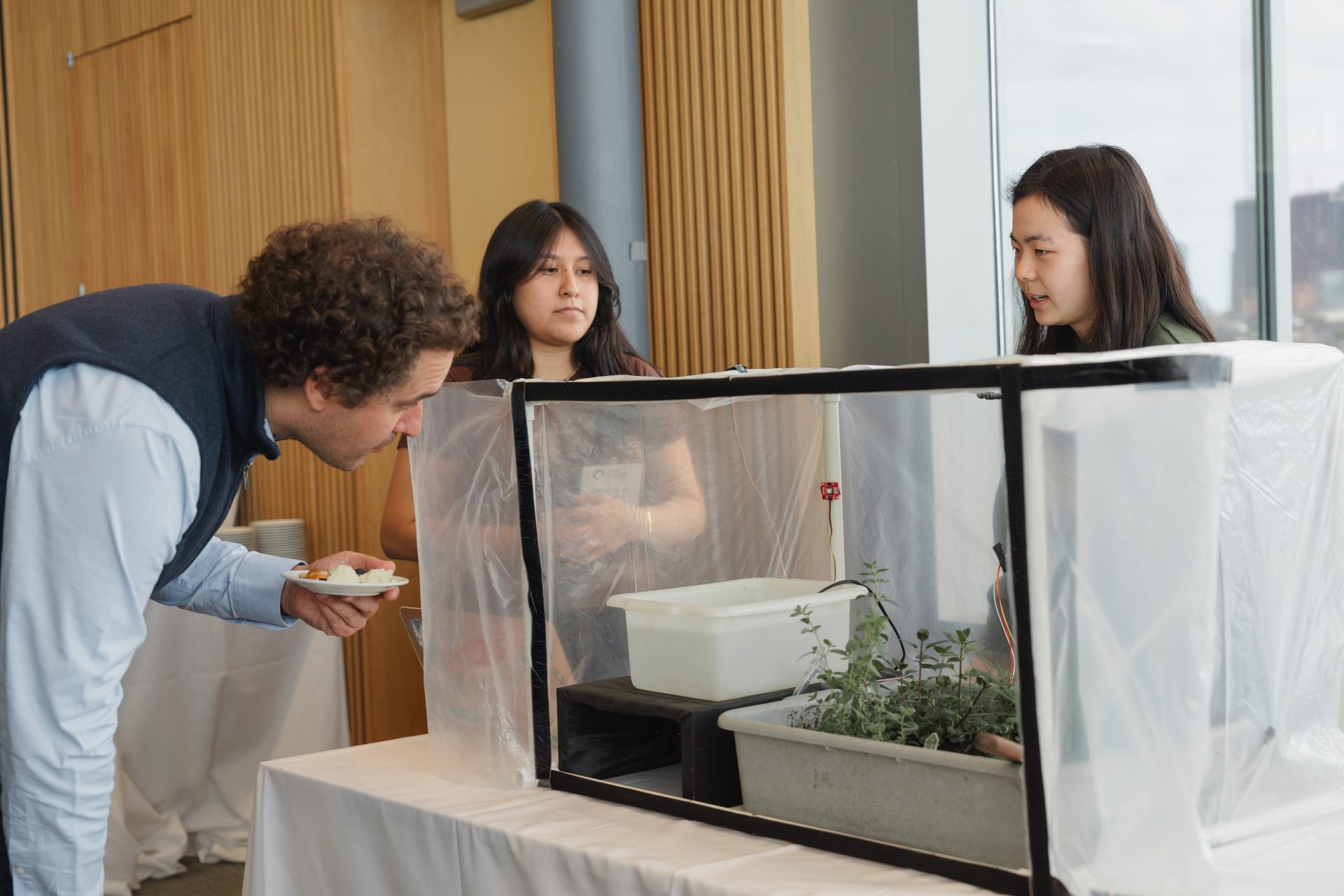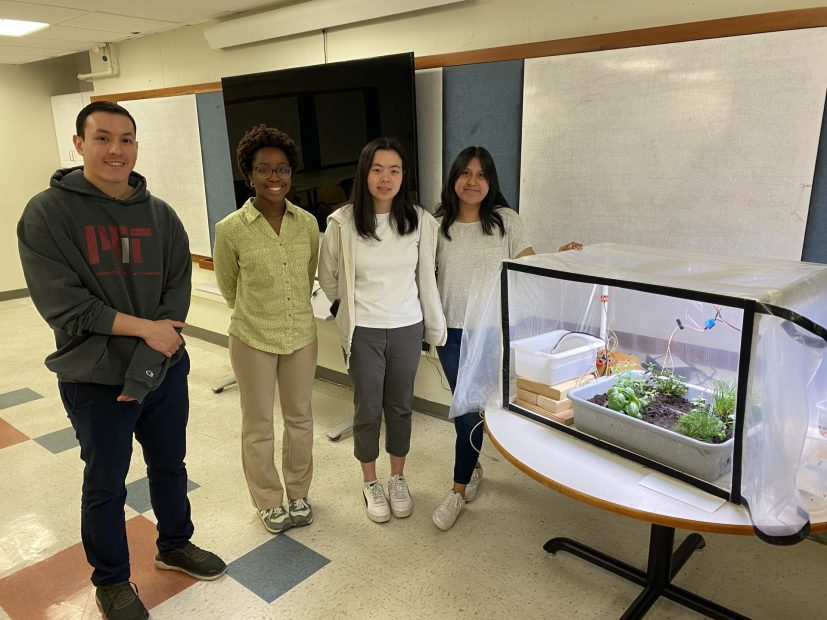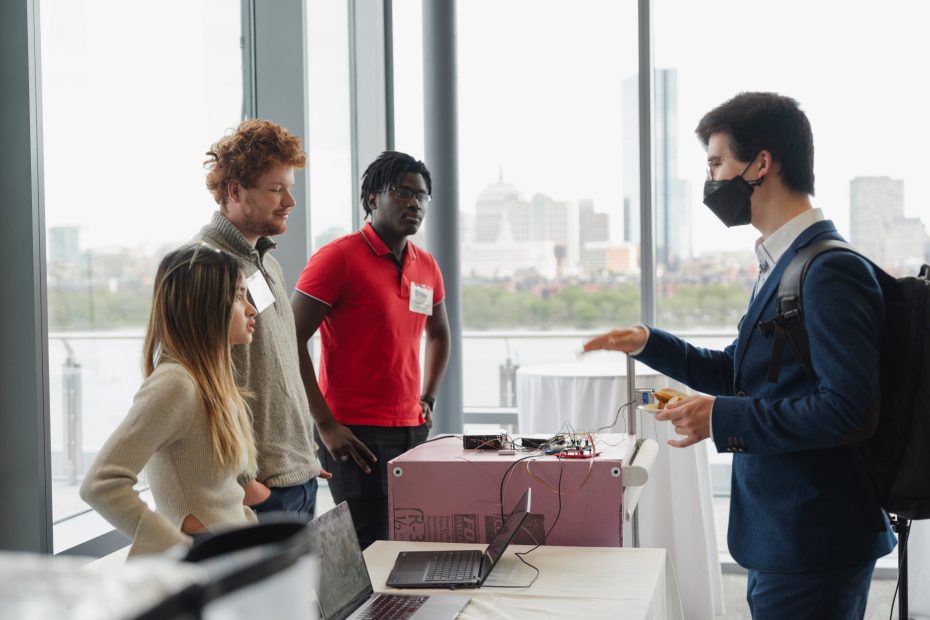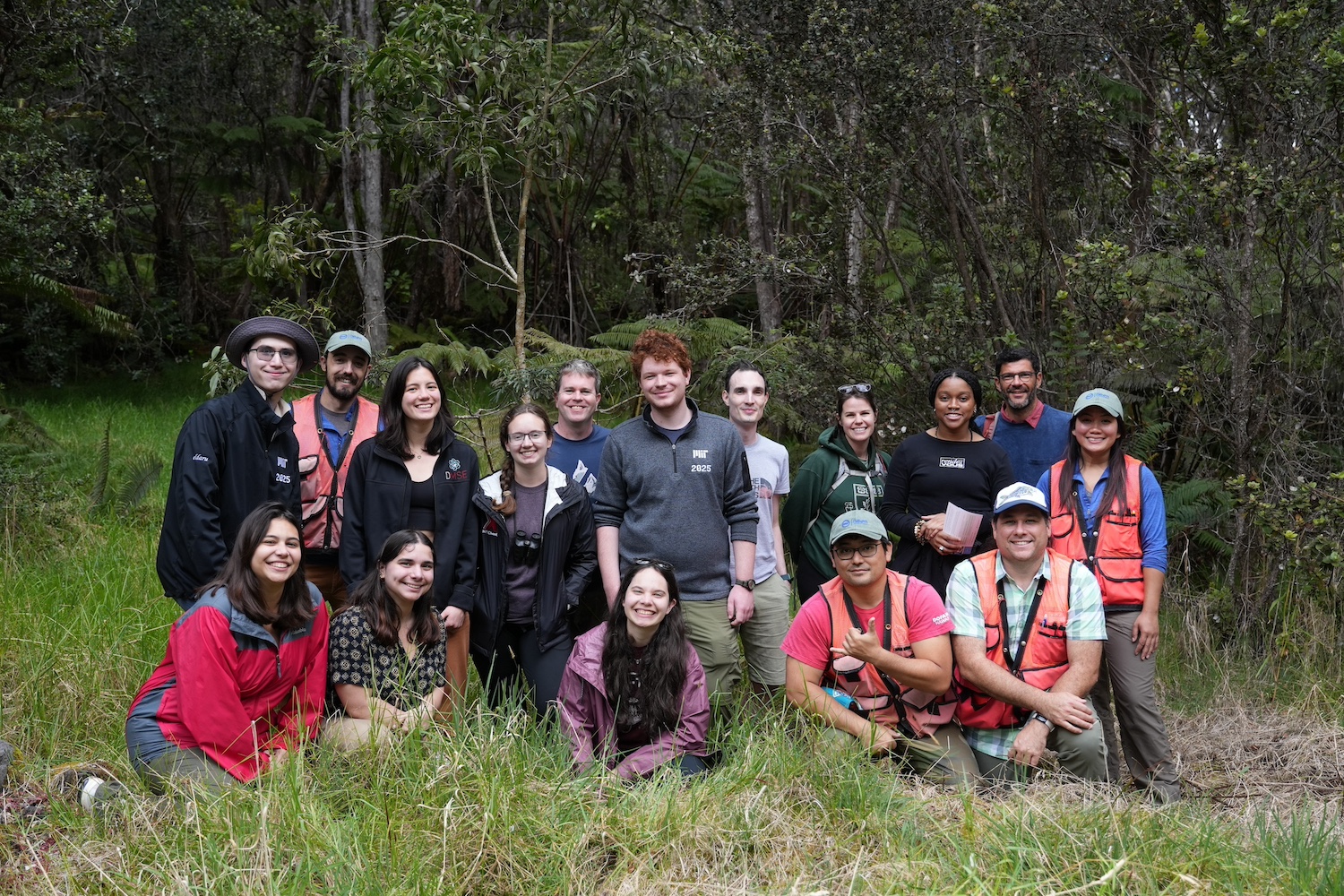Undergraduates design “smart” sensing systems in new lab class

Course one undergraduates explored the concepts and tools for modern sensing, internet-connected devices, and real-time data analytics for societal applications in 1.104 Sensing and Intelligent Systems. The new class develops the hands-on skills and fundamental knowledge in building smart sensing systems for real-world applications in energy, urban systems, and natural ecosystems.
“The applications of environmental and infrastructure sensing have expanded far beyond electrical and communications engineering and has become an important tool for practitioners,” says Saurabh Amin, professor of civil and environmental engineering and instructor for the class. “We expect that distributed sensing and data analytics will play an increasing role in not only the study of the natural and built environment, but in ensuring that our civil infrastructure and services operate reliably and efficiently across a range of conditions.” Amin says the class was developed to advance curricular and pedagogical innovations in this important area.
Over the course of the semester, students experimented with sensors and network data applications in the lab. Students worked in teams to develop a final design project that involved building a real-world application of their choosing.
“The students really seem to enjoy the class,” says Stephen Rudolph, lab manager and technical instructor in civil and environmental engineering who organized the lab activities and assisted students with the construction and implementation of their projects.
Rudolph observed that there were several skills students learned such as calibrating and using sensors, building circuits for sensors, soldering, using microprocessors, controlling systems based on sensor input. “I think they were excited to put these new skills together and create a project that would not have been possible for them prior to the semester,” he says.
Final projects showcase automated home devices
Lucila Carlos, a sophomore in civil and environmental engineering was on a team with Yujie Chen, Jade Personna, and Estefano Reyes Madriz, who built Ceres 2.0: A Smart Garden for Smart Gardeners. The system was designed for home gardeners who don’t have a lot of experience for gardening. The automated system recreates the environment for a specific plant to grow and gives the user data for better understanding of what’s going on within the system. The automated system has two main parts, a watering system that checks the soil moisture every 18 hours. If the soil moisture is below 20 percent, the watering pump will automatically turn on for 5 seconds to water the plants. The second part of the system is the lighting conditions. If the plants don’t have sufficient lighting, the lights will turn on automatically to provide the amount of light the plants need.
Being a hands-on learner, Lucila Carlos favorite part of the class was the labs. “Our instructors did a great job designing these labs for our class that were both engaging and beneficial to our learning,” she says. “In the beginning of the course, they felt long and tedious but, in the end, we could see how rewarding they really were. The labs built teamwork and taught us various technical skills along the way.”
Carlos also wasn’t expecting the class to have any correlation to her structural mechanics track. “I was shown how we could use sensors to detect tension/cracks in a beam. The class did well in showing how to apply the skills and material we learned in class. I recommend this class to anyone in the civil engineering department,” she added.
Undergraduates, James Shaw, Eve Silfanus, and Claudio Banjai were on a team that built a smart blind system. The system was built to reduce and control room temperature to boost energy efficiency. The blinds will automatically go down when the temperature in the room gets too hot due to solar heating.
Silfanus, a junior in the civil and environmental engineering systems track enjoyed the interactive labs in 1.104 that allowed her to experiment with Arduino circuits. “Through the labs, I learned essential skills for the final project.”
For Banjai his favorite part of the class, was that feeling after spending hours and hours in the lab trying to make a component of the project work and then finally getting a basic reading from the sensors displayed properly in the output terminal, or a file being saved properly. “While they might seem small in hindsight, achieving something new, in the moment, gives a great sense of accomplishment and catharsis,” he says.
Both teams showcased their final projects to the CEE community during the department’s annual Awards Ceremony in May and members of the Ceres 2.0 Smart Garden team earned the Best Undergraduate Research Award for their innovation.
Building skills and knowledge for societal applications
Amin with the help of Rudolph, postdoc Rui Cheng and in consultation with Professors Jesse Kroll, Tal Cohen, Heidi Nepf and Serguei Saavendra designed the course in Spring 2023. Over a period of one year, the team designed lab experiments to teach basic sensing mechanisms and fundamentals. They also designed specific experiments to help provide students hands-on experience in creating diverse sensing and monitoring capabilities – from soil moisture to shallow water waves to structural vibrations to remote sensing of vegetation. Three UROP students were also engaged in fall 2023 to finalize the experimental labs.
Amin says the goal of the new class was to ensure students feel confident about the process of conducting new scientific experiments and monitoring the key processes that govern the health of infrastructure and ecosystems.
“Students build basic knowledge about sensor physics, develop skills to build their own sensing systems, and utilize data analytics methods to analyze and act upon the data collected by these systems,” he says. He also states, “these skills better equip them to play leadership roles in promoting social equity and civic responsibilities in sectors where big engineering projects directly interface with multiple communities and stakeholders.”
The course development was supported by the Alex and Brit d’Arbeloff Fund for Excellence in Education and the Department of Civil and Environmental Engineering. The next offering of the class is in spring 2025.





